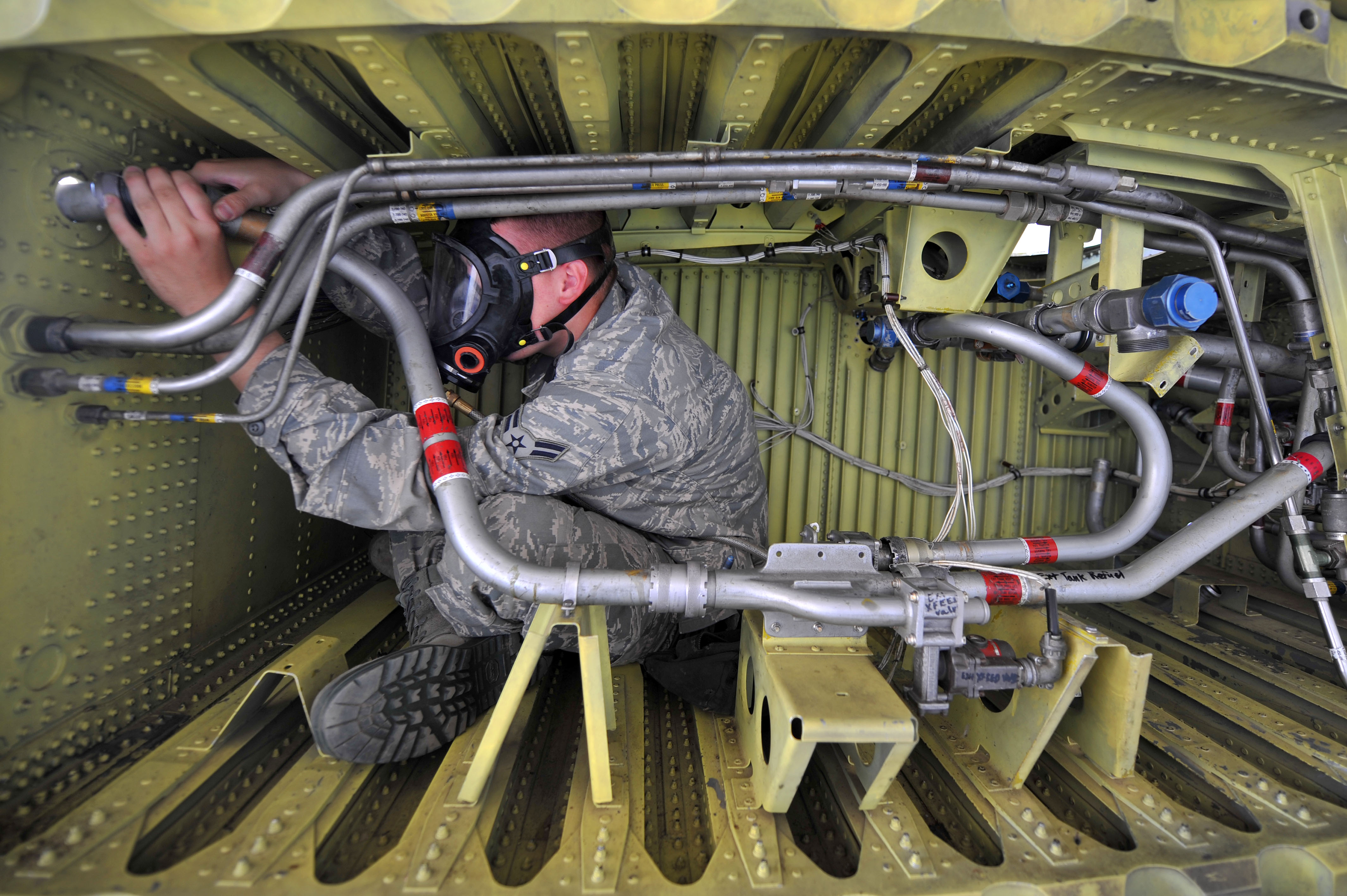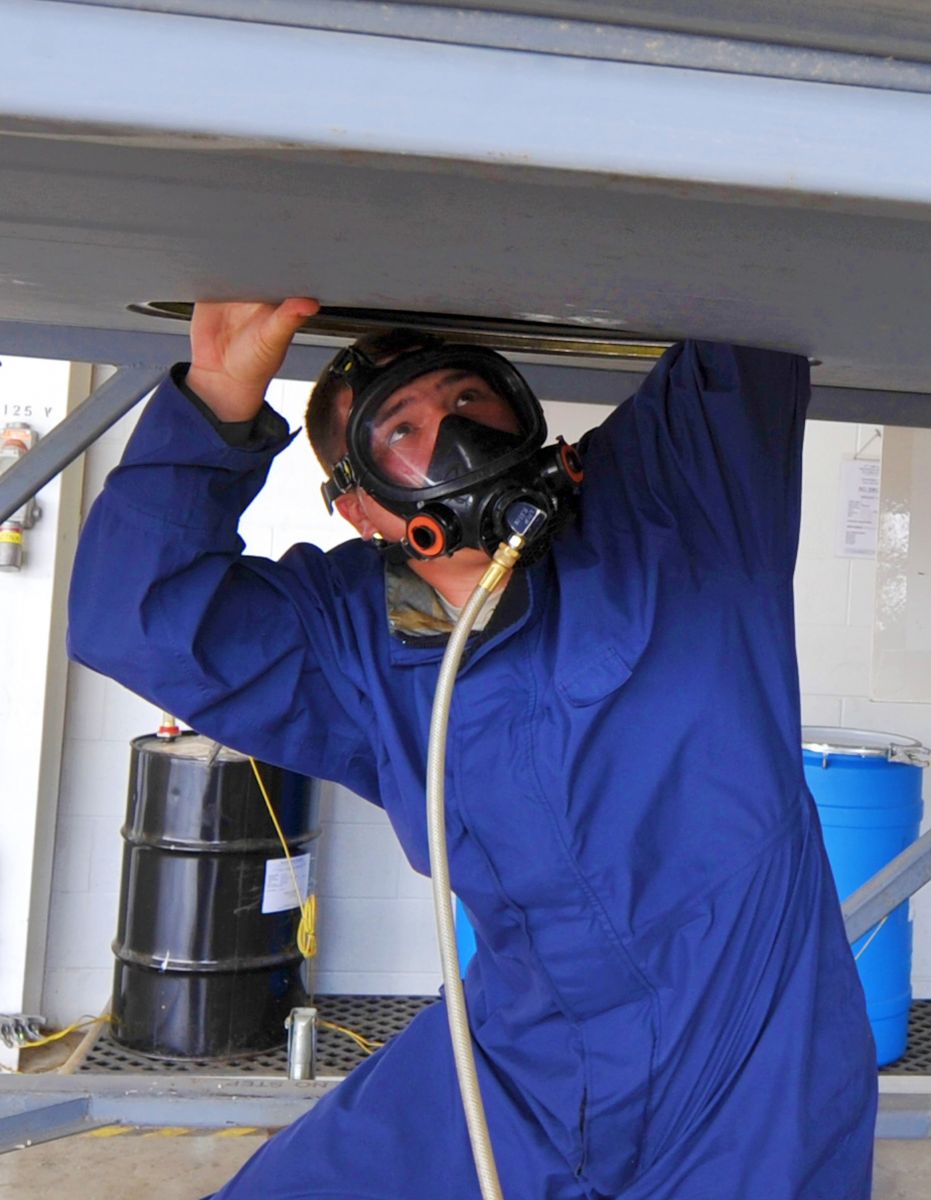


Aircraft Fuel tank Entry - The Purpose !
Aircraft Fuel tank, as the name suggest, is the leak proof housing for aircraft fuel primarily. Though, the Fuel tanks remain sealed for most of the aircrafts' life , scheduled or non-scheduled maintenance activity inside the Tank (interior) requires a Tank entry of modern commercial aircrafts.
However , Tank entry is always a planned task , owing to the number of risks and hazzards involved to it , non-compliance of which might lead to fire incident / accidents and loss of life.
Video Credit : John Baxter
These potential hazards include fire and explosion, toxic and irritating chemicals, oxygen deficiency, and the confined nature of the fuel tank itself. In order to prevent related injuries, operator and repair station maintenance organizations must develop specific procedures for identifying, controlling, or eliminating the hazards associated with fuel-tank entry.
Operators and Maintenance repair stations (MRO) can shield the maintenance personnel from these hazards by developing safety procedures (SOP) for fuel-tank entry personnel . The Plan Must include four basic understandings, that will help prevent related injuries :
- Fuel-tank hazards.
- Entry Preparation.
- Fuel Tank entry conditions.
- Emergency response plan (ERP).
Fuel tank hazzards can either be Physical or Checmical due to its nature and presence !
Jet Fuel (ATF) in the Commercial jetliners is among the most hazardous, under certain ambient conditions and it is considered to be too rich to burn.
Chemicals, that include jet fuel, may also present toxic or irritant hazards. At high concentrations, jet fuel and other hydrocarbons can affect the nervous system, causing headache, dizziness, and lack of coordination, chronic health problems, such as liver and kidney damage.
Cleaning solvents, sealants, lubricants, and other chemicals used in fuel-tank work can also cause irritating effects to the skin if not controlled.
Area volume matters ! the physical confinement of the tank itself can initiate hazards and can also exacerbate fire, explosion, and toxicity hazards.
Given the fact that, the entry hole ( read as access hole) of an oblong size less than two ft length and one ft width ,along with varying size of fuel tank interior can amplify the levels of flammable or toxic vapor.

Jeremy Kahler, a 6-foot-2-inch aircraft electrician with the 560th Aircraft Maintenance quadron, works inside a confined space – a space that has limited or restricted means of entry or exit. (U.S. Air Force photo by Ray Crayton)
The tank size becomes smaller as it progresses towards the outboard section of the wing, until it may accommodate only a maintenance person's head and shoulders. Outermost area of wing tanks allow only person's hands and arms.
Wing center- tanks and Stub tanks can be large enough to allow maintenance personnel to completely enter the tank . The access holes in these areas are usually the same shape and dimension as those in wing tanks.
The inside of these tanks usually have spar and rib structures, equipped with various size and shape access holes between sections.
There are Several steps that must be completed before a maintenance technicians make a fuel tank entry.
These include electrically grounding and defueling the airplane according to standard practices, making adequate fire protection equipment readily available, and deactivating associated airplane systems, including fueling / defueling and fuel transfer systems.

Photo by: Senior Airman Steele C. G. Britton
But , the final steps belong to the ergonomics , a safe atmosphere for maintenance personnel:
Step -1: The entry supervisor ensures SOP and OEM manual guidelines are being followed .
Step-2: The standby attendant stays outside of the fuel tank to monitor conditions in and around the work area.The standby attendant is authorized to order evacuation of the fuel tank if conditions change and put the entry personnel at risk.
Step-3: Entry personnel enter the fuel tank and perform the work . They must be able to recognize potential hazards and evacuate the tank if working conditions deteriorate.
Individually and together, the members of the fuel-tank entry crew must be aware of the following requirements for safe working conditions:
Better be prepared than sorry ! Emergency rescue plans should be in place .If specific response procedures are not developed, an emergency situation may conclude in severe injury or death to the personnel.

Robins Firefighter take part in confined space rescue training atop a C-130. (U.S. Air Force photo by Ray Crayton)
Operators and repair stations should prepare procedures for maintenance personnel to follow in the following four situations:
Airplane fuel-tank entry can not be avoaided, but improper handling can present hazards to maintenance personnel performing the work.
Effective preparation and training are key to a Successful Fuel-tank entry that can mitigate the risk factors involved.
MROs and Operator maintenance organizations can be effective in providing a safe work environment for fuel-tank entry personnel by working on procedures , identifying potential hazards, and instructing personnel in the specific procedures to be followed during fuel-tank work.
Credits :
Display Photo by: Senior Airman Steele C. G. Britton.
Article Photos : U.S. Air Force photo by Ray Crayton
Video By : John Baxter
